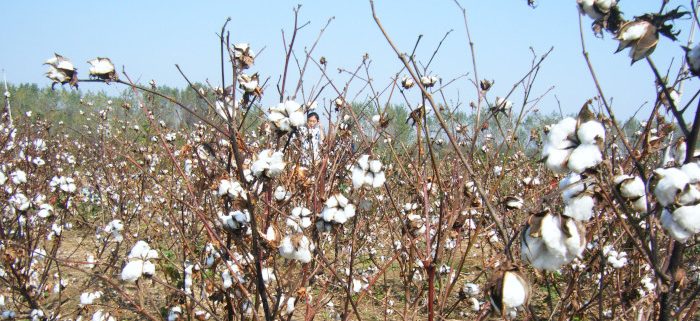Understanding secondary cell wall biosynthesis to improve fiber quality in cotton
By Yao Wang and Xue-Bao Li
Background: Cotton (Gossypium hirsutum) produces natural fibers (unicellular trichomes) on the seed, making it a valuable crop for the worldwide textile industry. Cotton fibers possess a unique secondary cell wall (SCW) that contains more than 90% cellulose but almost no hemicellulose or lignin. The phytohormones ethylene and auxin play indispensable roles in plant growth and development, but the molecular mechanisms for ethylene/auxin–mediated regulation of fiber SCW formation in cotton remain largely underexplored.
Question: We wanted to know if and how ethylene and auxin are involved in regulating cotton fiber SCW development.
Findings: We tested the role of these phytohormones in cotton fiber development using an in vitro cotton ovule culture assay with ethylene and auxin treatments. We also silenced GhERF108, which encodes an AP2/ERF transcription factor from the ETHYLENE RESPONSE FACTOR (ERF) family, which showed that GhERF108 positively regulates fiber SCW development. Moreover, both ethylene and auxin responses were reduced in GhMYBL1 silenced plants. GhERF108 interacts with two auxin response factors (GhARF7-1 and GhARF7-2), which respond to auxin signals to promote fiber SCW thickening. GhERF108 and the GhARF7s enhance the activation of GhMYBL1 in fibers where the SCW is thickening. GhMYBL1 directly binds to the promoters of cellulose synthase genes to activate their expression, promoting cellulose biosynthesis and boosting fiber SCW formation. Collectively, our findings demonstrate that the collaboration between GhERF108 and GhARF7s establishes crosstalk in ethylene-auxin signaling to activate GhMYBL1, ultimately leading to the activation of fiber SCW biosynthesis.
Next steps: Scientists aim to improve cotton fiber quality by genetic manipulation. Our work demonstrates that ethylene-auxin signal crosstalk may play a crucial role in improving fiber quality through regulating expression of the response genes (such as ERF and ARF transcription factors). We hope our work provides the theoretical basis for cotton breeding.
Reference:
Yao Wang, Yang Li, Shao-Ping He, Shang-Wei Xu, Li Li, Yong Zheng, Xue-Bao Li (2023). The transcription factor ERF108 interacts with AUXIN RESPONSE FACTORs to mediate cotton fiber secondary cell wall biosynthesis. https://doi.org/10.1093/plcell/koad214




